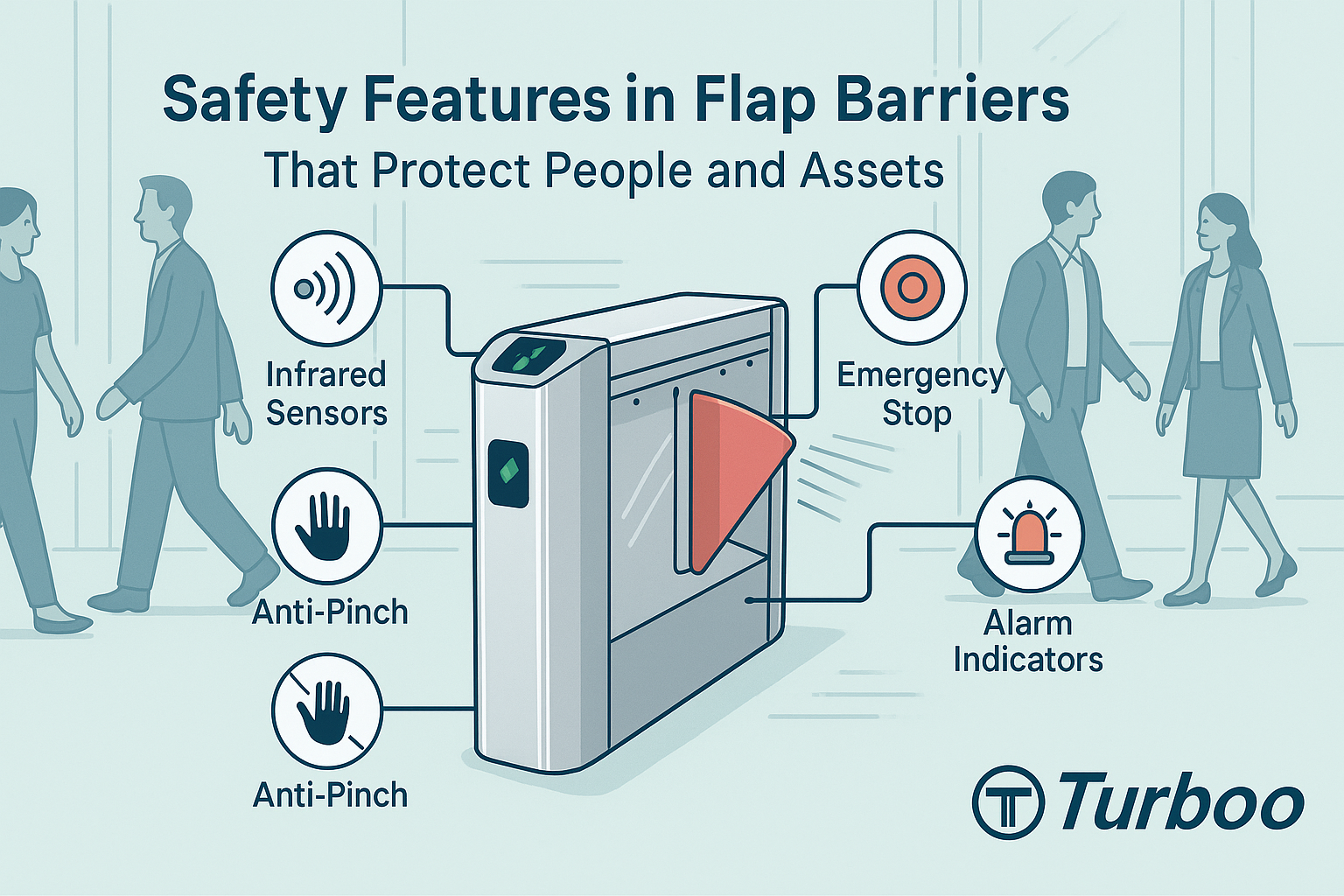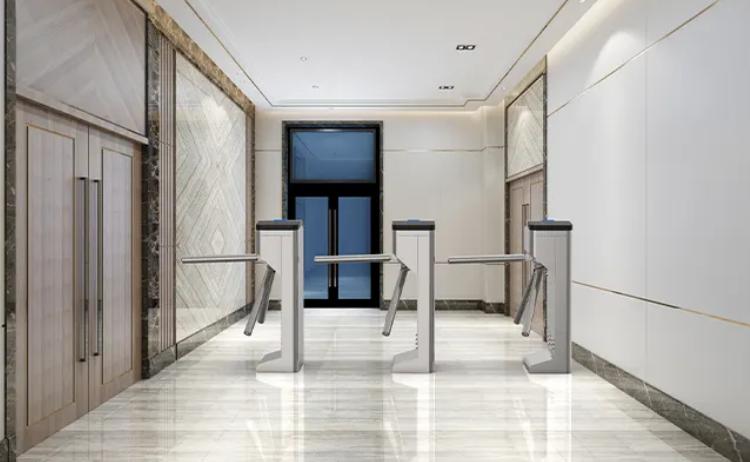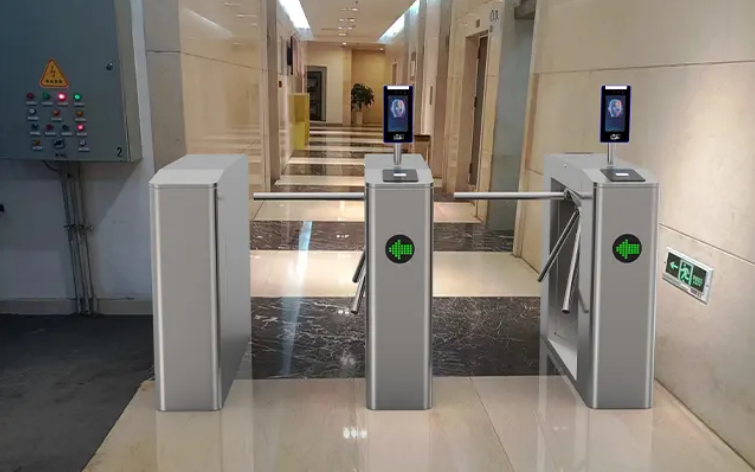Safety Features in Flap Barriers That Protect People and Assets


Flap barriers play a critical role in secure access control. But beyond managing entry, their most important job is keeping people and property safe. That’s where flap barrier safety becomes a non-negotiable part of system design.
In any access-controlled facility, safety features prevent physical harm and security breaches. Whether someone is walking through with bags, a stroller, or just in a rush, the barrier must respond quickly and safely. A misstep here isn’t just an inconvenience—it can lead to injury or compromise site security.
Today’s security professionals know that access control is about more than who gets in. It’s also about how safely and efficiently that entry happens. That’s why the best flap barrier systems come equipped with sophisticated safety mechanisms, built to handle real-world challenges without fail.
In this article, we’ll explore the essential safety elements built into modern flap barriers. You’ll see how sensors, alarms, overrides, and anti-tailgating systems all work together to protect both users and assets. These aren’t just technical extras—they’re vital protections that provide peace of mind and meet strict regulatory standards. Let’s explore how they work and why they matter.
Safety Sensors and Obstruction Detection
Safety sensors are the first and most essential layer of protection in any flap barrier system. These sensors are responsible for detecting the presence of people or objects in the flap path. Without them, barriers risk closing while someone is still passing through, which can cause injury or damage.
Most modern flap barriers use infrared and photoelectric sensors. These create invisible detection zones between the two cabinets. If something is in that space—whether a person, bag, or cart—the system delays flap movement. The flaps won’t close until the path is clear, preventing contact or pinching.
More advanced models use multi-beam sensor grids. These detect the exact position and size of objects within the passage. That level of precision allows the barrier to differentiate between a slow-moving person and a legitimate obstruction. It reduces false alarms while maintaining a high level of safety.
Some systems also use ultrasonic or radar-based detection for added sensitivity. These sensors work even in changing light or dusty environments, offering more reliable coverage in challenging settings.
These safety features are not just a convenience—they’re part of core access control compliance. In many jurisdictions, safety systems like these are legally required. You can find more details on compliance standards in this flap barrier compliance guide, which outlines how certified barriers meet government regulations and fire code requirements.
Sensors make flap barriers safe by preventing accidents before they happen. And in high-traffic environments, their reliability is the difference between smooth operation and constant risk.
Emergency Override and Release Mechanisms
Emergency situations demand fast, fail-safe responses. In such moments, a flap barrier must stop being a gate and become a safe passage. That’s where emergency override features come into play. These allow the flaps to open immediately when conditions require it.
One common form of emergency override is automatic opening during power loss. If the facility loses electricity, the flaps retract or swing open to allow people to exit freely. This is vital for fire evacuations, medical emergencies, or any incident where rapid clearance is needed. Some systems include built-in batteries that keep sensors and control logic running even without main power.
Other systems offer manual override options. Security staff or facility managers can activate a release button or switch to open the barriers manually. This can also be controlled remotely through a central monitoring system, giving command staff total access even if they’re not physically present.
Barriers can also be integrated with fire alarm systems or building management platforms (BMS). When an alarm is triggered, the barriers respond instantly—without requiring any human input. This ensures full safety compliance with evacuation standards and helps meet rules outlined in safety frameworks like those from the NFPA.
A well-designed emergency release mechanism is not an afterthought. It’s a core part of the system’s protective role, ensuring people can always exit safely, no matter the scenario.
Anti-Tailgating Technologies
Security breaches often occur when unauthorized individuals attempt to follow closely behind someone with access. This practice, known as tailgating, is a common threat in office buildings, universities, and transit centers. To prevent it, flap barriers include anti-tailgating safety features that monitor lane use and ensure only one person passes per access.
These systems rely on sensors positioned throughout the barrier lane. As soon as someone is detected entering, the system tracks their movement until they exit. If another person enters the lane before the first has cleared, or if the number of users doesn’t match the number of valid credentials presented, the system triggers a response.
That response can include stopping the flaps mid-motion, flashing warning lights, or activating a security alarm. In some systems, footage from a linked CCTV camera is automatically flagged for review. This makes flap barrier safety not just about avoiding physical harm—but about enforcing proper access protocols.
Anti-tailgating features are especially critical in sensitive areas where data security, legal compliance, or physical safety is at stake. Whether it’s a server room, lab, or restricted access hallway, unauthorized entry creates risk. These safety systems ensure that only those with the right credentials make it through.
And because anti-tailgating tech operates automatically, it reduces the workload on human security teams while improving enforcement consistency. You can learn more about how this function fits into broader access management in the flap barrier functions overview.
Alarm and Notification Systems
Flap barriers serve as frontline defenders in any security system. When something goes wrong—whether it’s a forced entry attempt, a mechanical issue, or a blocked lane—the system needs to raise an alert. That’s where alarm and notification features play a vital role in flap barrier safety.
Modern barriers come equipped with both visual and audible alarms. These activate in response to events like unauthorized access, sensor failure, or attempted tampering. The alerts serve two purposes. First, they deter further attempts by drawing attention. Second, they notify nearby staff or security teams that action is needed.
Some systems also send real-time notifications to a central monitoring panel or mobile app. This allows quick response even if no one is standing near the barrier. In high-security zones, these alerts may trigger automated lockdowns or access freezes, preventing any further entries until the issue is resolved.
Alarm systems also log incidents for later review. These logs support investigations, audits, and ongoing system optimization. They’re part of a broader safety ecosystem, where every anomaly is tracked and analyzed.
The value of this feature is reinforced by industry groups like the Security Industry Association, which recommend alarms as part of a comprehensive security infrastructure. Together with cameras, readers, and staff response plans, alarm systems ensure that every access point remains secure and responsive.
Safety Compliance and Standards
Flap barrier safety isn’t just about technology—it’s also about meeting strict rules and regulations. Facilities across industries are held to various compliance standards, and every access control system must support those requirements. Barriers that fail to do so can lead to fines, shutdowns, or serious liability.
Local and international safety codes govern how access systems operate in different environments. These include maximum closing force limits, reaction times, and emergency release criteria. For example, ISO standards dictate how quickly a barrier must respond to obstructions. Similarly, fire safety standards such as those outlined by the NFPA require barriers to fail open or allow evacuation paths during power loss.
Compliance also ensures accessibility. Barrier systems must accommodate all users, including those with disabilities. That means flaps must stay open long enough, avoid abrupt movement, and include tactile or audio cues for safe navigation.
To stay compliant, many manufacturers test their systems under official certification protocols. They use lab tests, field trials, and endurance simulations to ensure that every safety feature works as intended. You can confirm whether a product meets these standards by checking its documentation or third-party test certificates.
For more on regulatory expectations, refer to the flap barrier compliance guide, which explains what standards apply and how vendors verify them.
Ultimately, flap barrier safety is about more than convenience—it’s about legality and accountability. Choosing a system that meets or exceeds the rules keeps people safer and helps your facility operate with confidence.
Barrier Design for Physical Safety
Beyond sensors and software, flap barrier safety is also influenced by the system’s physical design. The structure, materials, and motion path of each barrier affect how safe it is for users of all kinds. That’s why manufacturers invest heavily in safe mechanical design and soft-touch technologies.
A good barrier starts with rounded edges and smooth finishes. These reduce the risk of cuts or bruises if someone bumps into the cabinet or the flaps themselves. Materials like soft acrylic or coated glass are preferred in areas with children, elderly users, or heavy luggage traffic. They absorb impact without shattering or breaking apart dangerously.
The movement of the flaps also matters. Barriers that open and close gently—not abruptly—are safer, even when moving quickly. Motion damping systems help reduce sudden starts and stops, which can startle users or cause imbalance. This is particularly useful in crowded or high-speed entry zones.
Flap width is another consideration. Narrow lanes may restrict movement and raise the chance of accidental contact. Wider, ADA-compliant lanes allow users more space, which improves comfort and reduces collisions.
Role of Software in Safety Functions
Software plays a central role in ensuring flap barrier safety. Every function—from flap motion to alarm activation—is managed through intelligent control software. This software allows for fine-tuned settings, real-time diagnostics, and rapid adjustments to changing environments.
For example, flap movement speed can be customized based on user needs. In a quiet library, slower flaps create less noise and provide a safer experience for elderly users. In a busy train station, faster flaps maintain flow without compromising sensor accuracy. This kind of dynamic timing is only possible with flexible control software.
Another key software feature is auto-diagnostics. Barriers can monitor their own performance, checking motor strain, sensor alignment, and response speed. If something deviates from expected parameters, the system triggers an alert or enters safe mode. This proactive approach helps catch issues before they become failures.
Some systems also include error prevention logic. For instance, if someone tries to re-enter without a new credential, the barrier won’t open, but it also won’t alarm unnecessarily. This balance prevents both false alarms and missed threats.
Advanced models offer cloud-based software with remote access. This means safety settings can be adjusted from a central location, and real-time data can be shared with maintenance or security teams instantly.
Software isn’t just the brain of the system—it’s the heart of its safety. And just like hardware, it should be evaluated for reliability, usability, and update support when choosing a flap barrier.
Safety in High-Traffic Environments
Some of the most challenging places to maintain flap barrier safety are high-traffic environments. These include public transportation hubs, event venues, university entrances, and large office towers. Here, hundreds or even thousands of people pass through each day. Barriers must respond instantly, consistently, and safely—every single time.
In such settings, the risk of contact or error increases simply because of volume. People may rush, carry bulky items, or try to slip through behind others. To address this, high-capacity flap barriers use enhanced sensors, faster motors, and more durable materials to maintain performance under pressure.
These barriers are often equipped with multi-zone detection that allows them to “see” every user’s position. This ensures that flaps do not close prematurely and that alerts are only triggered when genuinely needed. Smart queuing logic also helps control user flow, keeping entries orderly without sacrificing speed.
In extreme peak periods, these barriers may integrate with overhead cameras or AI-based flow analysis systems to automatically adjust speed, delay, or even open multiple lanes. That level of responsiveness turns a potential safety risk into a seamless experience.
High-traffic environments are where flap barrier safety features are truly tested. If the system can handle a morning commuter rush or a post-concert exit, it’s ready for anything. And that’s why these features aren’t optional—they’re essential.
User Experience and Safety Assurance
Flap barrier safety is closely tied to user confidence. When people feel safe walking through a barrier, they move naturally and quickly. That flow is essential for both security and efficiency. But if a user hesitates, feels unsure, or has had a negative experience in the past, it disrupts the process and reduces trust in the system.
That’s why visual and audible cues are an important part of the user experience. Lights guide users when to enter or wait. Sound signals confirm a successful pass or warn of a misstep. These cues are designed to be simple, clear, and universal—making the barrier more intuitive to everyone, regardless of language or familiarity.
Consistency is key. Barriers should move the same way, every time, for every user. Predictable timing and behavior create a sense of safety. If the flaps sometimes move quickly and other times slowly—or if the sensors don’t always detect a person—that uncertainty causes people to pause or even avoid the system.
Accessible design also contributes to safety. Wide lanes, clear markings, and ergonomic placement of card readers or biometric scanners all make passage easier. These physical and sensory design elements reduce user stress, which leads to smoother, safer operation overall.
Ultimately, safe systems are trusted systems. When users don’t have to worry about being pinched, rushed, or confused, they focus on their task—not on getting through a gate. That’s how flap barrier safety becomes a vital part of your facility’s user experience.
Integrated Safety Across Security Systems
No flap barrier operates alone. In modern facilities, these systems are part of a broader security and building management network. To maximize flap barrier safety, integration with other systems is essential.
For example, alarm events triggered by the barrier can automatically notify security personnel via a control room or mobile app. But integration can go deeper. Barriers can also share data with CCTV systems. When a breach or tailgating event occurs, the corresponding camera footage is automatically bookmarked for review.
Some setups allow flap barriers to work alongside access control logs and biometric records. This helps in both verifying who entered and analyzing how they entered—safely or otherwise. Such unified logs are especially useful during audits, investigations, or policy reviews.
Building Management Systems (BMS) may also be linked. If a fire alarm is triggered anywhere in the building, the barriers in that zone can automatically retract or unlock. This type of integration is essential for emergency compliance and response coordination.
Integrated systems provide multi-layer protection. If the barrier misses something, the CCTV sees it. If someone bypasses access, the log shows it. And if anything unusual happens, the system can respond across all channels—not just at the barrier itself.
This coordination turns the flap barrier from a standalone checkpoint into a smart security node, contributing to facility-wide protection and safety.
Case Examples of Safety Features in Action
Real-world scenarios show how flap barrier safety works in practice. Let’s consider two examples where barrier features make a major impact.
In a downtown office tower, hundreds of employees arrive between 8:00 and 9:00 AM. Each person scans a badge and walks through a flap barrier. The barriers are equipped with high-speed sensors and fast flaps to keep flow steady. One morning, an employee drops their ID card and bends to pick it up just as the flaps begin to close. But the sensors detect the partial presence and halt the motion. No injury occurs, and the person safely continues. That’s sensor accuracy at work.
In a university science building, researchers work in restricted labs that require both card and fingerprint access. One student attempts to slip through behind a colleague. The barrier detects two bodies in the lane and stops movement, triggering an alert and a red light. Campus security is notified through the monitoring system and takes appropriate action. Here, anti-tailgating features prevent a potential breach.
These stories show how flap barrier safety features protect people and enforce protocols—not in theory, but in real daily use.
Choosing a Barrier with Certified Safety
When evaluating flap barriers, don’t rely on marketing claims alone. Look for certified safety features backed by independent testing. These certifications indicate that the product meets industry and regulatory standards for obstruction detection, emergency operation, and safe mechanical behavior.
Check for labels like CE, FCC, RoHS, or ISO. These confirm the product has passed specific electrical and mechanical safety checks. Ask vendors for documentation, including safety test reports and performance data under simulated conditions.
Visit the flap barrier buying guide for a breakdown of how to evaluate a barrier based on its safety credentials. It outlines what to look for, what to avoid, and how to compare competing models effectively.
Certified barriers cost more—but they also last longer, perform better, and reduce your legal risk. They show that the manufacturer takes safety seriously—not just as a feature, but as a responsibility.
Maintenance and Safety Testing
Maintaining flap barrier safety isn’t a one-time task. It’s an ongoing process that includes routine testing, calibration, and inspection. Like any mechanical system, barriers wear down over time. Sensors may drift, flaps may slow, and motors may lose precision.
Regular maintenance helps catch these issues early. That includes testing sensors with controlled obstructions, verifying alarm functions, and checking override mechanisms. Technicians should also inspect physical components for signs of wear or misalignment.
Some systems include self-diagnostic software that performs these checks automatically. When an issue is detected, the system alerts operators before failure occurs. This proactive monitoring is crucial for maintaining high safety standards in busy environments.
Safety audits—performed quarterly or annually—add another layer of confidence. These comprehensive reviews ensure that your flap barriers still meet compliance requirements and operate as intended.
Remember: a safe barrier is one that works today and every day after. Maintenance is what keeps those protections active and reliable.
Conclusion: Investing in Protection for People and Assets
Flap barriers are more than automated gates—they’re safety systems that protect lives and secure buildings. The features built into these devices, from sensors to alarms to design elements, play a daily role in preventing injuries and breaches.
Choosing a flap barrier with strong safety features isn’t just a technical decision—it’s a strategic investment. It ensures smoother operations, better compliance, and stronger protection for both people and property.
By understanding how these features work and why they matter, you can make smarter decisions for your facility. And by prioritizing safety, you create a secure, comfortable experience for everyone who walks through your doors.












